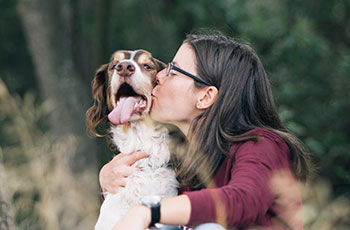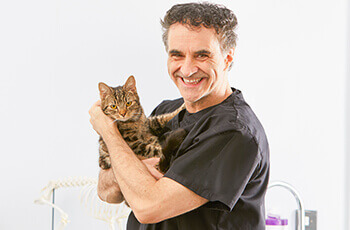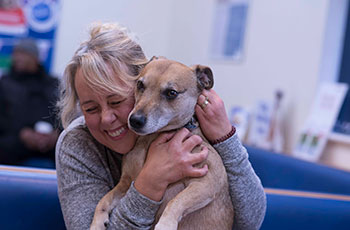The 3 key questions to ask when comparing pet insurance policies.
Avoid hidden limits
Hidden vet fee limits explained
What do socks, sunglasses, underwear, rope, plastic dinosaurs and jewellery have in common? The answer is they have all been swallowed at one time or another by Boris, a 5-year old Hungarian Vizla owned by Sharon.
Known as a ‘Velcro’ dog because he sticks to his owner’s side, Boris lost his mum at 3 weeks old so had to be nurtured very carefully. But he’s repaid that love and care many times over, helping Sharon’s son get through some tough times at school and encouraging Sharon to get out of the house when she was suffering with migraines.
In 2017, Boris’s habit of eating anything in sight got him into serious trouble when he ate a tennis ball that got stuck, causing him to have 18 inches of his intestine removed. Diagnostics included x-ray and ultrasound, and the operation that followed needed hospitalisation overnight with medication. Fortunately, his care was covered by Sharon’s Petplan dog insurance.
The decisions you make for your animal can be influenced by the breadth of care your insurance covers and, ultimately, the care you can afford.
Professor Noel Fitzpatrick
Other owners may not be so lucky. Although it’s fairly common for dogs to eat something they shouldn’t, many owners can face indigestible bills running into hundreds of pounds if there are hidden limits in different types of pet insurance policies.
Hidden pet insurance limits to look out for
Hidden limits are clauses buried in the small print of your policy. They can impact both the level of care your pet can receive and the amount of money you have to pay out of your own pocket. Some pet insurance policies look impressive at first glance until you discover that the package may:
- Not cover the full cost of behavioural conditions and doesn’t cover dental illness at all
- Limit cover for certain diagnostics, like MRI scans or certain conditions, like cruciate ligament injuries
- Only allow a certain amount of cover per condition. This means that although you do have £4,000 worth of cover per year, it is split into four conditions with a limit of £1,000 of cover for each.
The best breadth of cover for your pet
It makes sense to check the cover for vet bills provided by a policy before you sign up. A policy with a better breadth of cover is the best way to make sure your pet always has access to the best care.

“Vets can do more for pets than ever before,” says leading veterinary specialist Professor Noel Fitzpatrick (best known as the Supervet). “New diagnostic tools for example allow me to help patients faster - but care like that comes at a cost.” He adds, “I believe that vets have a moral responsibility to explain why particular diagnostic tests are needed, discuss the evidence and ethics behind medical and surgical interventions, and to give people value for money, backed up by a suitable insurance policy.”
Professor Fitzpatrick wants families to be aware of how important their choice of insurance can be in the long-term care of their pet: “The decisions you make for your animal can be influenced by the breadth of care your insurance covers and, ultimately, the care you can afford. I believe that all pets and their families should be offered all of the options openly and honestly, which requires integrity from vets and insurers alike.”
The bottom line is, always ask the right questions before taking out pet insurance. Look at the range of conditions and types of treatment covered. Examine whether the full cost of diagnostics like MRI scans or CT scans is included. Look at any limits on the cost of individual treatments. With a Petplan Covered For Life® insurance policy, all this and more comes as standard.









